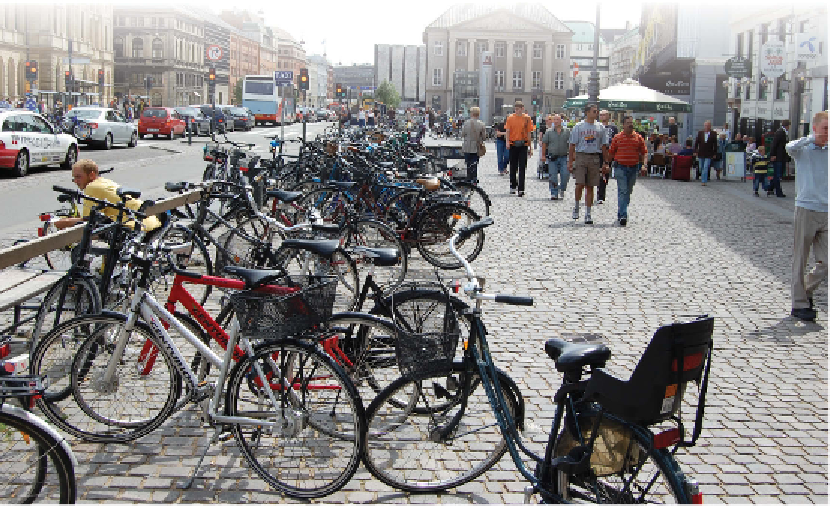Travel Reference
In-Depth Information
people are in shape. (What's safe for the environment can be dangerous for
absentminded pedestrians. On my last visit to Copenhagen, on two occasions
I was nearly l attened as I stepped from a taxi into the bike lane.)
London and Paris have taken lanes away from drivers to create bike
lanes, but so far the lanes are underused and the entire ef ort just seems
to make things worse. Somehow, Copenhagen has it i gured out. During
Copenhagen's rush hour, there are more bikes on their roads than cars, and
everything moves smoothly.
While walking through one of Copenhagen's main squares, I noticed
it was dominated by people, cobbles, and buildings. It felt calm, spacious,
and inviting. I looked again and saw that there were also about i fty bikes—
blending into the scene almost unnoticed—and absolutely no cars. If instead
of bikes, those were parked cars, the charm would be gone.
Hotels have even started providing visiting guests with loaner or rental
bikes. I i nd having a bike parked in my hotel's bike rack is a great way to i t
in and literally “go local.” Copenhagen has as many bike lanes as car lanes, and
I can get anywhere in the town center as fast on my two wheels as by taxi.
When you get out of the city to explore the Danish countryside, you'll see
that newly paved roads are lined by perfectly smooth bike lanes—one for each
direction. Even out in the country, it seems that bikes outnumber cars.
You'll see more bikes than cars on Copenhagen's squares.
















































































